
The best neuroscience research news from March 2019
Scientifica’s selection of the best neuroscience stories from March include a gene therapy that caused blind mice to regain sight, an AI-controlled robotic limb driven by animal-like tendons and a video game-led training device that helps stroke survivors regain arm function.
1. Scientists identify gene partnerships that promote spinal cord regeneration
Scientists at the Marine Biological Laboratory have identified gene partners in the axolotl salamander that enable it to regenerate the neural tube and associated nerve fibres after severe spinal cord damage.
The team identified that the c-Fos gene is upregulated in glial cells after a spinal cord injury in both humans and axolotls. However, in human’s response to injury, c-Fos is paired with the c-Jun gene, whereas in axolotl’s c-Fos is paired with JunB.
Modifying gene expression in axolotls enabled the scientists to force the c-Fos gene to be paired with c-Jun, as it is in humans. This prevented the axolotls from regenerating their spinal cord after injury. Future studies will investigate if the opposite is possible in human cells.
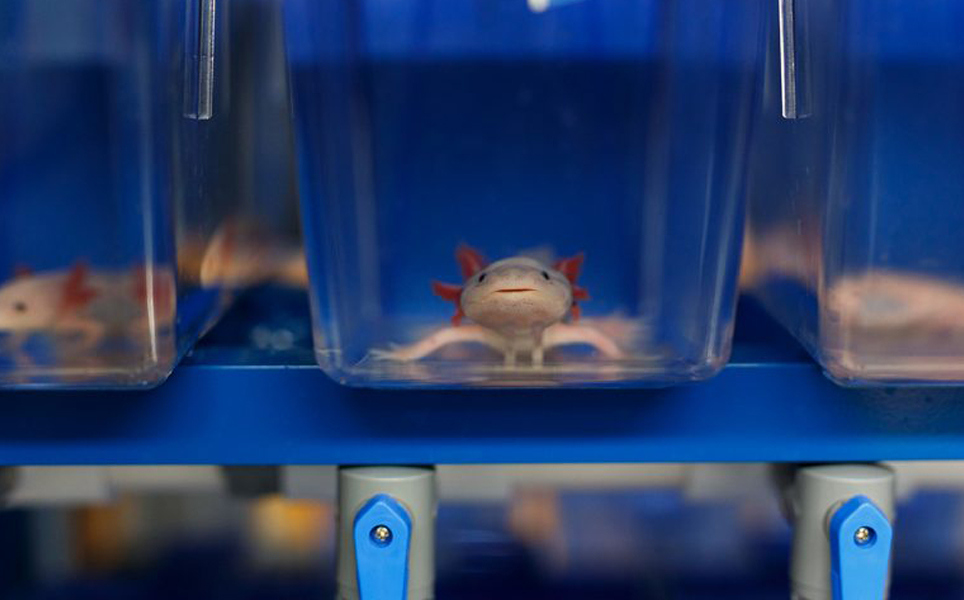
c-Jun or JunB
2. Detailed new primate brain atlas could lead to disease insights
Researchers from Cold Spring Harbor Laboratory took part in a study in Japan that resulted in the 3D-reconstruction of a marmoset brain.
The study also revealed information about neuronal connections across the brain. The marmoset brain was chosen to be reconstructed as it more closely resembles the human brain than mice, and is smaller and flatter than a lot of other primate brains. The data will be enable scientists to have a greater understanding of how the architecture of the human brain and how it is affected by various neurological disorders.
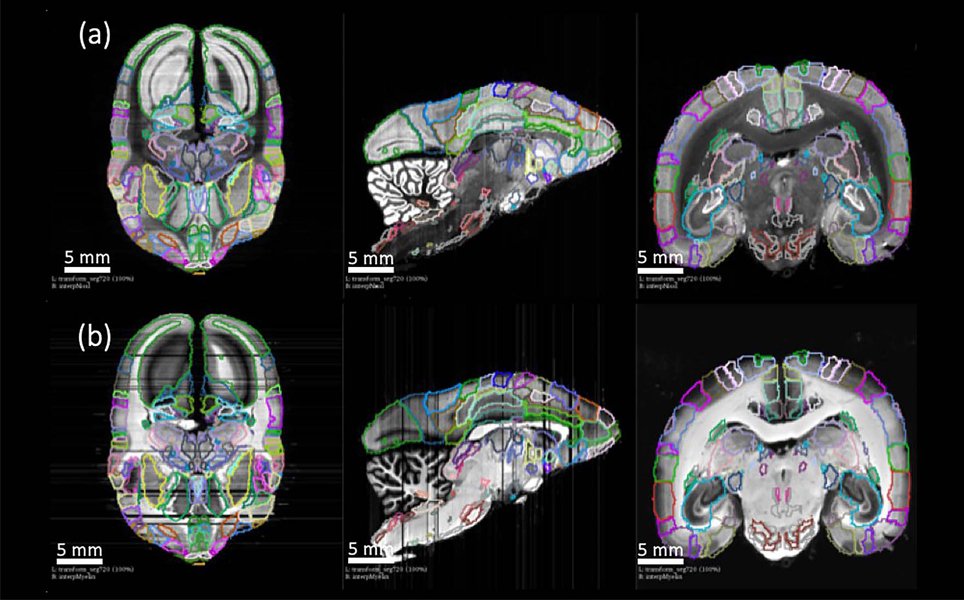
Atlas of the marmoset brain
3. High-speed, 3D SCAPE microscope captures stunning, live videos of fruit fly nerve cells in action
Columbia University researchers have utilised their cutting-edge microscope, called SCAPE, to create 3D videos of individual neurons moving, stretching and twitching inside fruit fly larvae as they crawled.
The SCAPE microscope enabled researchers to see the activity of the neurons whilst measuring the 3D movements of the body. The data obtained from these videos reveals how proprioceptive neurons work together to help the body sense where it is in space. The team could see that different proprioceptive neurons fired when the animal performed different movements.
SCAPE will continue to be used to map connections between cells and identify the role of various cell types in different activities, including moving, eating and even forming new memories.

Find out more about SCAPE
4. A robotic leg, born without prior knowledge, learns to walk
An AI-controlled robotic limb driven by animal-like tendons has been developed by scientists at USC Viterbi School of Engineering. The limb can be tripped up, and recover within the time of the next footstep, even though it wasn’t previously programmed to do this.
The robot had the opportunity to understand its environment in a process of free play, where the random movements of the leg enabled the robot to build an internal map of its limb and its interactions with the environment. The robot learns from experiences, rather than being programmes for potential scenarios.
The technology would be invaluable to those who have lost their limbs, as it can learn the user’s habits and mimic their movements, making it feel more natural.
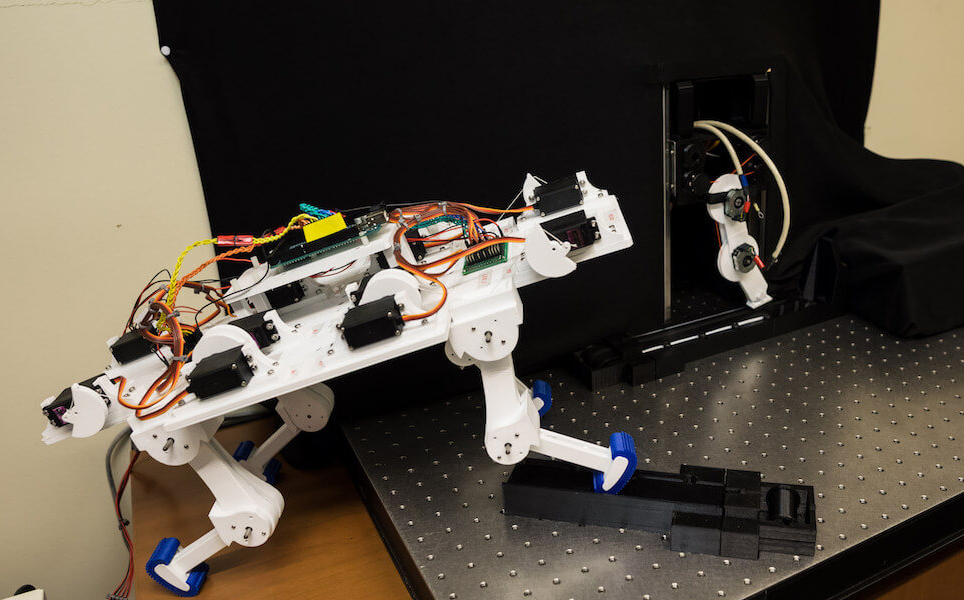
More natural limb
5. Mushrooms may reduce risk of cognitive decline
Researchers at the National University of Singapore Yong Loo Lin School of Medicine have found that eating more than two portions of mushrooms each week may reduce the likelihood of developing mild cognitive impairment.
It is believed that the reason for the reduced prevalence of mild cognitive impairment in those who eat mushrooms may be due to a compound called ergothioneine (ET). ET is an antioxidant and anti-inflammatory that humans are unable to produce, and so need to obtain it from the diet. A previous study found that plasma levels of ET in elderly people with mild cognitive impairment was lower than those without.
Future research will further investigate if ET does delay or prevent mild cognitive impairment.

Eat more mushrooms!
6. Robots enable bees and fish to talk to each other
Engineers from EPFL worked with scientists at the University of Lisbon, Karl-Franzens-University Graz, the University of Paris Diderot and the University of Zagreb to use robots to get groups of bees and fish to communicate with each other.
The bees were located in Austria and the fish were in Switzerland. The two species transmitted signals to each other using robots, which are designed to blend into groups of animals and influence their behaviour. The robots within the two animal groups emitted signals that were specific to that species. The groups of animals responded to these signals; the fish swam in a given direction and the bees swarmed around one terminal. The robots exchanged this information with each other and translated it into signals appropriate for the species that they were with. After 25 minutes, the animals were synchronised.
These robots could be used to better understand animal behaviour and how animals interact.
Inter-species and inter-country communication
7. Using an anti-smoking drug to control neurons
Chemogenetics has been used by scientists at the Howard Hughes Medical Institute’s Janelia Research Campus to pair an anti-smoking drug with specifically engineered ion channels to turn neurons on and off.
By inserting the engineered ion channels into specific neurons, only these neurons will be modulated by the anti-smoking drug, ensuring other neurons are unaffected. Scientists are using the chemogenetics system to find links between neural activity and behaviour, and it could one day be used to treat conditions such as epilepsy and pain.
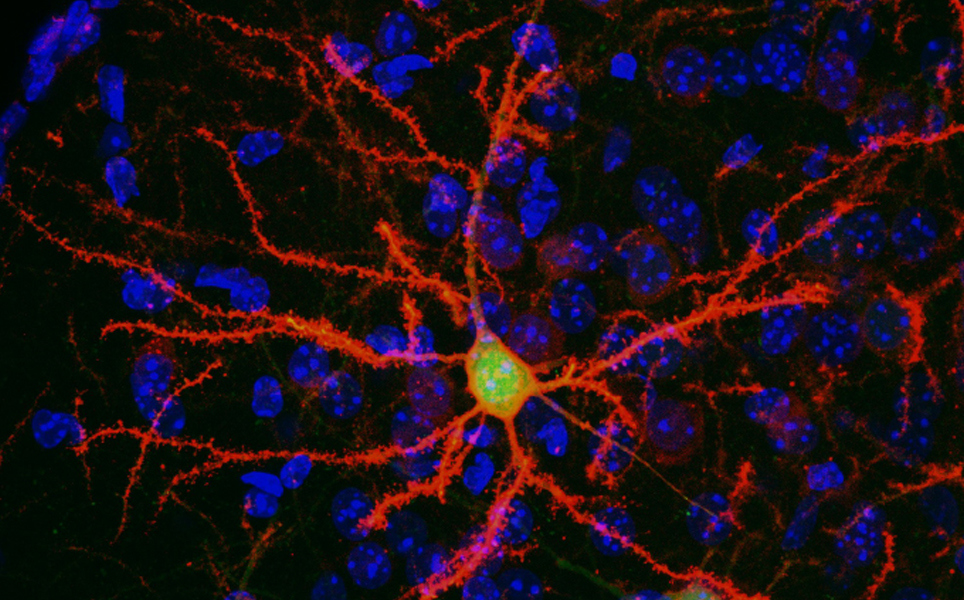
Switching neurons on and off
8. It’s no Fortnite, but it’s helping stroke survivors move again
A new video game-led training device, invented by scientists at Northwestern Medicine, has enabled severely impaired stroke survivors regain function in their arms.
Many stroke survivors are unable to extend their arm forward with a straight elbow because the muscles work against each other, known as abnormal coupling. The scientists developed a device known as a myoelectric computer interface that identifies which muscles are abnormally coupled and retrains them to move normally using electrical muscle activity to control a cursor in a customised video game. The more the muscles decouple, the higher the person’s score.
Decoupling device
9. With single gene insertion, blind mice regain sight
Blind mice regained their sight a month after scientists at the University of California, Berkeley, inserted a gene for a green light receptor into their eyes.
The gene was delivered via an inactivated virus that was targeted to retinal ganglion cells, which are normally insensitive to light. After being targeted by the green light receptor, the ganglion cells were sensitive to light and able to signal to the brain. These signals were interpreted as sight.
The researchers hope to take this gene therapy to human trials within the next three years. It is hoped that this can be used to treat people who have lost their sight as a result of retinal degeneration.
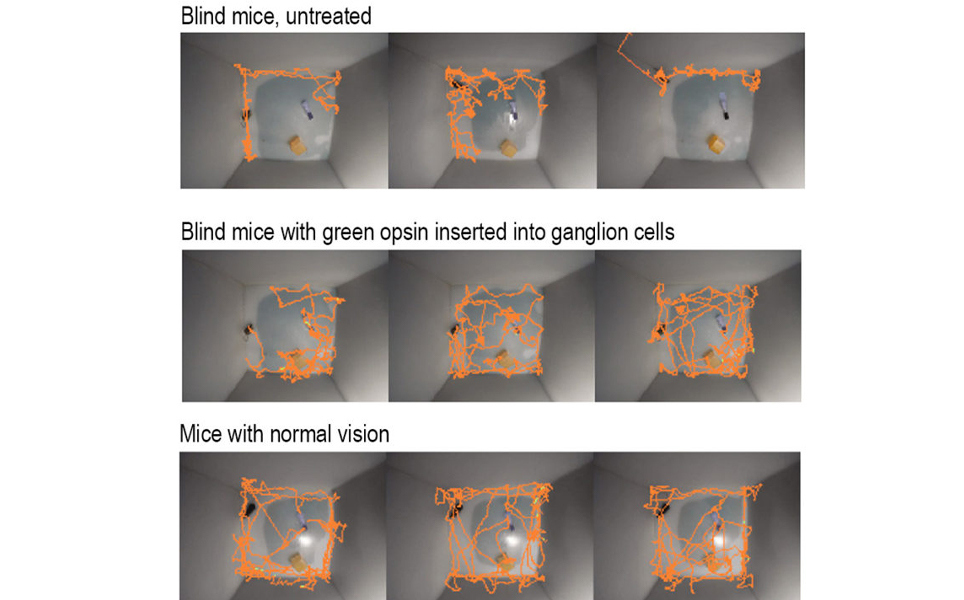
Sight restored!
10. Now, scientists can turn off and turn on brain cells
Brain researchers and engineers at Aarhus University have teamed up to find an algorithm that can precisely control the delivery of laser light through a cable fibre into the brains of mice so that a single nerve cell can be targeted.
By selectively turning single neurons on and off, the researchers can investigate how a single neuron communicates with other neurons and study the brain and its signalling in greater detail. The researchers will be using this technique to investigate how signals spread in neuronal networks, including how fast they spread and the strength of the signals.
Specifically switching on neurons
Banner image credit: Columbia Univeristy
Sign up to receive our latest news
Find out about Scientifica's latest product releases, company news, and developments through a range of news articles, customer interviews and product demonstration videos.

)